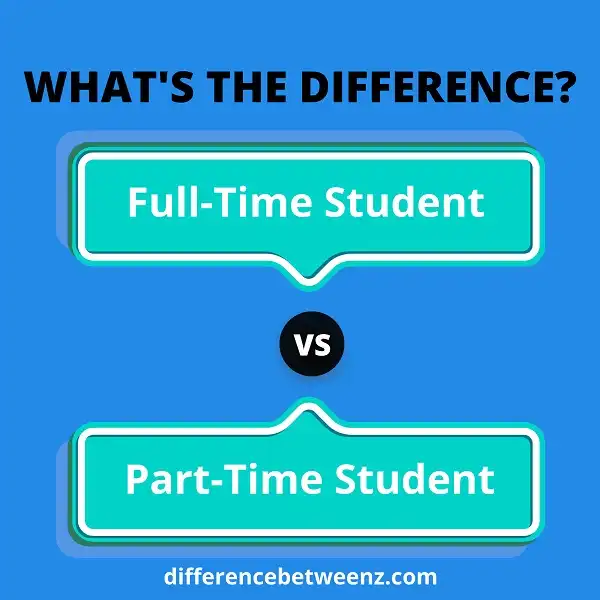As a college student, you may be wondering what the difference is between being a full-time and part-time student. Both have their pros and cons, but which one is right for you? Here’s what you need to know about the differences between these two types of students.
What is a Full-Time Student?
Full-time students are enrolled in a minimum of 12 academic credit hours per semester. Full-time status is required for many forms of financial aid, including federal loans and grants. Full-time status is also often a requirement for student housing and health insurance. Full-time students typically take four or five classes per semester, which equals out to about 16 hours of class time per week. Full-time students also spend time outside of class on homework, studying, and other activities related to their coursework. As a result, full-time students typically have very little free time during the school year. However, many students find that the benefits of being a full-time student outweigh the costs.
Full-time students are able to complete their degree in a shorter period of time, which can save money in the long run. Full-time students also have access to more resources and opportunities than part-time students. For example, many scholarships and internships are only available to full-time students. As a result, full-time students often have an advantage when it comes to finding jobs after graduation. Overall, being a full-time student requires a great deal of time and effort, but it can be well worth it in the end.
What is a Part-Time Student?
Part-time students are those who study for fewer hours per week than full-time students. Part-time students may be studying for a variety of reasons, such as Family commitments
Work commitments
Mature age
International student status. Part-time students often find that they need to juggle their time between their studies, work, and other commitments. This can be challenging, but many students find that it is manageable with careful planning. Part-time study can also offer some advantages, such as the ability to gain work experience while you study. If you are considering undertaking part-time study, it is important to speak to your potential institution to discuss your options.
Difference between Full-Time and Part-Time Student
Full-time and part-time students both have different academic experiences. Full-time students take a minimum of 12 credits per semester, which is the equivalent of four classes. They typically study during the day and are able to get involved in clubs and organizations on campus. Part-time students take fewer classes, which gives them more time to work or take care of other responsibilities. However, they may miss out on some of the social aspects of campus life. Full-time students also have access to more financial aid than part-time students. In general, full-time students are more likely to complete their degree within four years than part-time students. Part-time students may take longer to finish their degree, but they often have more life experience than full-time students.
Conclusion
So, what’s the difference between a full-time and part-time student? The biggest distinction is the number of hours a student spends in class. Full-time students typically take 12 to 15 credit hours per semester, while part-time students usually take six or seven credit hours. In addition, full-time students are often eligible for more financial aid and have more opportunities to get involved on campus.
Part-time students may find it harder to juggle work and school, but they also have more flexibility when it comes to their class schedule. Ultimately, the decision whether to go full-time or part-time depends on each individual student’s situation and goals. If you’re still undecided about which route is best for you, we encourage you to speak with an enrollment advisor.


